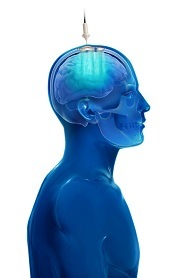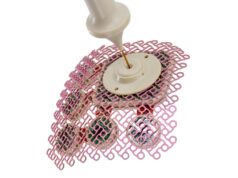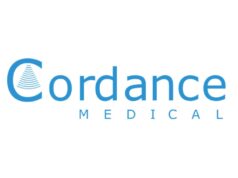
Carthera has announced the publication in The Lancet Oncology of results from a Phase 1 clinical trial carried out by scientists at Northwestern University Feinberg School of Medicine (Chicago, USA). In the trial, they used the SonoCloud-9 implantable ultrasound device to repeatedly open the blood-brain barrier (BBB) and deliver chemotherapy in patients with recurrent glioblastoma.
A Carthera press release notes that the results show the treatment was safe and well-tolerated, with some patients receiving up to six cycles of treatment.
In what the company claims is the first study to successfully quantify the effect of ultrasound-based BBB opening on the concentrations of chemotherapy in the human brain, opening the BBB led to an approximately four- to six-fold increase in drug concentrations in the brain. The Northwestern team observed this increase with two different chemotherapy drugs—paclitaxel and carboplatin.
“This is potentially a huge advance for glioblastoma patients,” said lead investigator Adam Sonabend (Northwestern Medicine, Chicago, USA). “Temozolomide, the current chemotherapy used for glioblastoma, does cross the BBB, but is a weak drug. In the past, studies that injected paclitaxel or carboplatin directly into the brain of patients with these tumours observed promising signs of efficacy, but the direct injection was associated with toxicity. In our study, the use of the SonoCloud-9 system has demonstrated promise for safe and tolerable delivery to patients.”
In this Phase 1 clinical trial, patients underwent surgery for resection of their tumours and implantation of the SonoCloud-9 system, before starting treatment within a few weeks. Every three weeks, paclitaxel was delivered with accompanying ultrasound-based BBB opening. In subsets of patients, studies were performed during surgery to investigate the effect of the SonoCloud-9 system on drug concentrations. The BBB was visualised and mapped in the operating room using a fluorescent dye called fluorescein and by magnetic resonance imaging (MRI) obtained after ultrasound therapy.
In another first, the study reports that using Carthera’s novel skull-implantable grid of nine ultrasound emitters opens the BBB in a volume of brain that is nine times larger than the initial device—a small single-ultrasound emitter implant. The release notes that this is important because, to be effective, the approach requires coverage of a large region of the brain adjacent to the cavity that remains after the removal of glioblastoma tumours. This region is typically the location of the infiltrated tumour cells that lead to tumour recurrence after surgery.
“The findings from this study provide further evidence that our next-generation SonoCloud-9 technology can be used to safely disrupt the BBB over a large volume and significantly enhance the levels of a wide range of therapeutics in the human brain,” said Michael Canney, chief scientific officer at Carthera.
The findings of the study, which demonstrate significant enhancement in brain drug concentrations—as well as those from a recently completed Phase 1/2 trial also in recurrent glioblastoma patients using the drug carboplatin—are the basis for a Phase 3 study that Carthera will initiate in 2023. The objective of this pivotal trial, in which participants will receive carboplatin delivered to the brain with the ultrasound technique, is to investigate whether the SonoCloud-9 can prolong survival in patients receiving this novel treatment versus the current standard of care.
“Results presented by scientists at Northwestern demonstrating significant enhancement in drug levels as well as the recent safety and efficacy observed in our Phase 1/2 trial with carboplatin support our plan to progress to a Phase 3 clinical programme evaluating the SonoCloud-9 system for the treatment of recurrent glioblastoma,” said Frederic Sottilini, CEO of Carthera. “This opens promising perspectives for patients fighting this devastating brain disease.”













